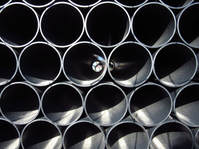HOW EXACTLY ARE CHARGES CALCULATED?
These are just some of the multiple considerations which come into play (the complex task assigned to any reputable freight agency):
These would be a very brief look at a more detailed insight needed in making the right choice when looking seriously at cost issues – the final profit margin. Efficient freighting is a complex logistical system when combined with cost calculations. For example, just looking at one aspect of freighting OTR: On the road commerce across various industries and complex supply chains requires the services of an adept freight company. This is a small insight into the potential ramifications and needs which are taken care of by different freight types of equipment: Various types of carriers meet OTR freight needs:
The situation becomes more difficult when special needs must be met. Many people are familiar with the term “oversize.” This is the most common non-standard freight problem: This means – freight needs which are extraordinary, in the instance of size and volume - therefore unmanageable by usual standards and procedures. Another type of singular freight problem, which has yet to be defined according to specific standards in the industry, yet which is constantly recurring, is the following: “overlength” This is a very prevailing point of contention in the industry at the moment because the charges have not been accurately standardized as yet Some freight shipping companies define this as an accessory charge. What would this mean? Usual charges are calculated according to volume – the length, height, width, and weight of the freight item. In the case of items which have essentially just length, as an essential dimension – like steel poles – this cost parameter doesn't fit well. Presently the situation is as such for those clients looking for reasonable freighting of items which are long, and without any other importantly sizeable dimensions - In answer to the question: what is our solution for you in this type of freight dilemma? OUR RECOMMENDATION There has of late been a high rise in the number of carriers who have followed a policy of diminishing their overlength limits to an abstract level (96”) 8 feet. Though they will ship items which are longer, the surcharge is inconvenient, and certainly not cost-effective. There are a few ways to get around this disadvantage: 1. Simply change your carrier: a no-brainer. Since we work with such a broad database of carriers known for their excellent delivery, we can easily find you one that suits your needs and pocket: i.e., with the overlength charge invariable as before. Choosing a new carrier is straightforward – ask your agent to nominate a few more suitable on their list, with a breakdown of comparable rates and other valid factors. This is a sure way to save on this freight obstacle 2. Another alternative is to check whether the length of your item(s) can be reduced in any way. Do you need to ship the item in that dimension? Will the client-receiver use it in that dimension, or would they be equally as satisfied if the dimensions were reduced scaled down? For instance, a pipe cut in half. These are small details, but ones which, when thought out more clearly and logistically, can make a notable saving – in particular with ongoing bulk item freighting Our support agents are always ready to answer any queries in this respect or any other. You will find them friendly, well-informed and helpful. Discuss it with us – together we can find the best tailor-made options for your needs. For more information about our freight services, and to get a free quote, please click here! Comments are closed.
|
Connect With UsArchives
April 2021
|
CONTACTEMAIL USFOLLOW US |
SERVICES |
Industries |
QUICK LINKS |
Copyright © 2023 TransAmerica Express Logistics LLC. All Rights Reserved. 866.321.2568

